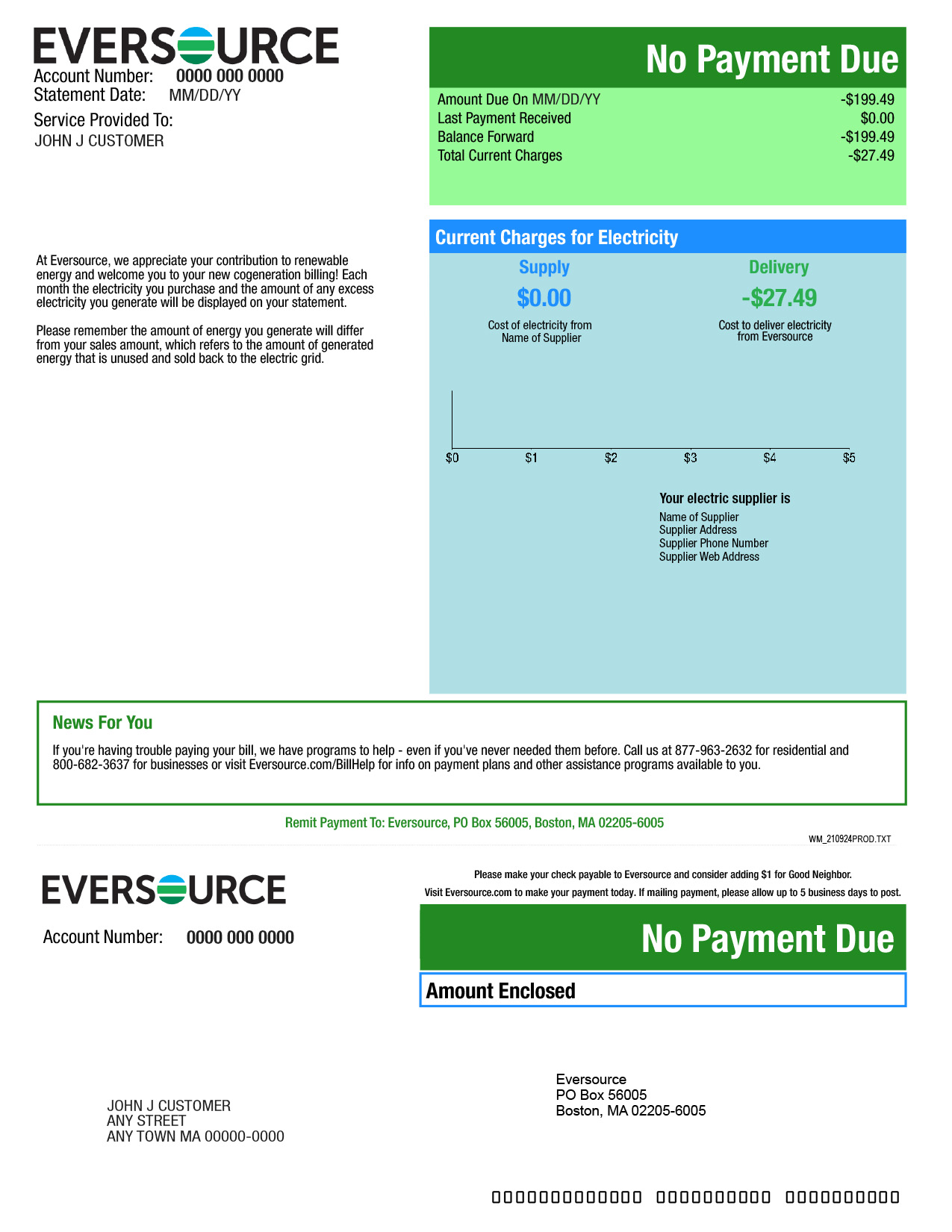Information on this page is for customers in
{{ town-name }}
Massachusetts SMART Solar Bill Example
This sample bill is for Eversource solar customers in Massachusetts who participate in the SMART incentive program and have 2 meters: solar production and electricity consumption.
If you have a solar system but don't participate in SMART, please view a sample net metering bill.
Note: Sample bills are for illustrative purposes only. If you have trouble viewing the descriptions of each bill section, view the text below the bill.
Example of a SMART solar bill for customers in Western Massachusetts


First page of a solar SMART bill for a customer in Western Massachusetts
- Payment Due Summary: A negative dollar value for Total Current Charges means your solar energy system produced more electricity than you used this month. The balance forward amount is from the previous month.
- Supply Charge: The supply charge will be zero in months when your solar energy system produced more electricity than you used.
- Delivery Charge: All customers get a delivery charge that covers our cost to read your meters and provide you with a bill. If you have a net metering credit, the delivery charge will be deducted from the credit
Second page of a solar SMART bill for a customer in Western Massachusetts
- Payment Due Summary: This box shows a summary of all your charges. The breakdown is below.
- Purchase and Sales Table: The amount of energy you use (purchase) from the grid is subtracted from the amount of energy you send back (sell) to the grid. Purchases-sales = net usage. A negative number means you had excess generation for the month and will be used to determine your net metering amount.
- Solar Production Table: Solar installation production is shown here.
- Distributed Solar Charge: The Distributed Solar Charge pays for the cost of solar incentives in Massachusetts and is calculated based on both your solar production and electric consumption meters.
- Net Generation Credit: If your system produces more electricity in a month than you use, a credit will appear on the Net Generation Credit line. The amount is calculated by multiplying your net usage by the net metering credit value. You won’t see this line in months where your system produces less energy than you use.